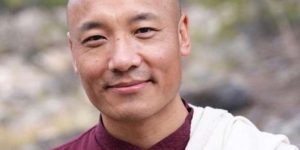Talking openly about the blight of suicide
We face a global mental health epidemic. When people are suffering from untreated, severe mental illnesses and emotional disorders, suicide becomes a real and present danger. According to a World Health Organization (WHO) report published in 2014, 800,000 individuals worldwide were committing suicide each year, meaning one person every 40 seconds. Statistically, teenagers, university students, and young adults died of suicide most often. Men were overwhelmingly more likely to die in violent suicides. An increase in mental health problems preceded COVID-19, but the pandemic has heightened mental stresses, with a correlating rise of suicides, especially among young people in the US.
Suicide is commonly divided into two categories. First, there are individuals who plan, organize, and write suicide notes in advance of their death. Second are those who turn to suicide because they feel unable to control their emotions when overwhelmed. Psychologists and sociologists have different theories about why people kill themselves. There may be external causes that lead to great physical suffering, such as severe injury or extreme poverty. Such suffering often extends to emotional trauma, grief, or turmoil, although the emotional factor can often be its own cause for suicide. Frequently, there are subjective and extremely intense feelings of insult, shame, failure, or humiliation, which the individual is unable to endure, leading to the conclusion that death is unequivocally better than living with intense social stigma or personal shame.
In the latter case of social shame, we can see how young people might turn to suicide as a result of perceived failure. The perceived failure—perhaps the inability to pass an exam, the loss of a job opportunity, or a romantic breakup—can lead to a sense of disgrace, humiliation, or shame. Such feelings can be due to personal expectations, but they are often imposed from without by the culture, family life, and societal values in which young people find themselves. Emotions can therefore be volatile upon suffering these perceived failures. Parental pressure can be overwhelming when children fail to attain desired or expected exam results. Young people may find themselves socially ostracized after a breakup or suffer romantic rejection. Or, as is particularly common in the post-COVID era, they might feel a deepening sense of loneliness that social media cannot resolve, with a lack of meaningful social bonds that would offset any sense of stalled progress or regression.
What the Buddha said about suicide
According to Buddhism, suicide or suicidal behavior is driven by craving and desire, specifically the craving for non-becoming (Pali: vibhava-tanha). Human beings cannot prevent pain by ending their own lives, nor can they escape suffering by doing so. Suicide is the result of a wish to annihilate oneself, and the result is rebirth in the cycle of samsara. The individual suffers endlessly.
A number of incidents involving suicide were documented in early Buddhist literature. The Channovada Sutta of the Majjhima Niakaya tells the extraordinary story of a monk named Venerable Channa, who killed himself. The tale is unusual because it offers a canonical Buddhist perspective on what could constitute a “blameless” suicide. A blameless suicide seems to be defined as a suicide by an enlightened being who is in pain for no productive reason, and will not be reborn in samsara upon killing themselves. Therefore, while suicide is still seen as a greatly deluded action (the suffering being will simply end up being reborn in a body to experience suffering all over again), the enlightened being could feasibly end their own life without any karmic trace that would define such a suicide as “blameworthy.”
Channa appeared to be afflicted with an incurable disease. Ven. Sariputta and Ven. Mahachunda visited him and inquired about his condition. Channa responded with a vivid description of the pain he was suffering, and then declared that he wanted to slit his wrists and end his life. When Sariputta and Mahachunda urged him not to, he argued:
“Reverend Sāriputta, it’s not that I don’t have suitable food; I do have suitable food. It’s not that I don’t have suitable medicine; I do have suitable medicine. It’s not that I don’t have a capable carer; I do have a capable carer.
Moreover, for a long time now I have served the Teacher with love, not without love. For it is proper for a disciple to serve the Teacher with love, not without love. You should remember this: ‘The mendicant Channa slit his wrists blamelessly.’”
(Channovada Sutta)
It was extraordinary for the sutta’s writers to record Sariputta and Mahachunda as having given him an extended exhortation on the emptiness of the sense perceptions, only for Channa to have proceeded to kill himself after they had left. The fact that the Buddha, upon learning of Channa’s suicide, declared him blameless, seems to indicate that Channa had attained at least the status of a non-returner (anagami) before the monks’ visit, or was enlightened immediately after their Dhamma talk.
The Godhika Sutta in the Samyutta Nikaya tells the story of Godhika, who committed suicide after falling into despair. He lamented: “Six times already I have fallen away from temporary liberation of mind. Let me use the knife.” However, after his death, the Buddha commented: “Such indeed is how the steadfast act: They are not attached to life. Having drawn out craving with its root, Godhika has attained final Nibbāna.” He further commented that Mara, the spirit of delusion, could not find the consciousness of the deceased Godhika, implying that “with consciousness unestablished [my emphasis], the clansman Godhika has attained final Nibbana.” The Buddha seems to have made distinctions between suicide that lands the individual right back in samsara, and suicide by a person who has already “unestablished consciousness,” and therefore will not return to the world of death and rebirth.
While the Buddha seems to have allowed for specific and rare circumstances under which suicide might be blameless, it is clear that in all others, killing oneself with a mind full of desire to be free from suffering will only compound the problem of rebirth and saddle oneself with yet more negative karma. Given that the overwhelming majority of suicides are done out of negative emotions and not out of an enlightened attitude, suicide as it occurs in the modern world would have been a source of great compassion for the Buddha.
According to the Pali Vinaya literature, the Buddha urged monks to concentrate on the loathsome aspects of the body, to meditate on impermanence and non-attachment to sensual desire. Certain monks began turning to suicide or asking someone to end their lives due to an unchecked loathing for their bodies. When the Buddha learned about this, he criticized those who had misunderstood his teaching and placed it out of context. The Vinaya further states that a member of the monastic community shall not promote or commit murder or suicide.
Preventing suicide
As we have little experience of truly enlightened beings in today’s world, the specific exception of a “blameless” suicide by someone who will not be reborn rarely applies in our usual encounters with suicide. Communities must therefore work together to prevent it.
Psychiatrists recommend a variety of measures to prevent suicide. There needs to be a culture of acceptance and compassion that discusses suicide openly, without fear of stigma or shame. Children should be mentored so that they can regulate and accept failure. Those seeking mental help should be applauded and supported. This, of course, requires a cultural shift in what it means to seek mental health treatment. We do not shame people for going to a doctor when they experience physical ailments. Likewise, we should support those who are afflicted with mental illness. Mental problems should be diagnosed and treated as soon as possible. In the meantime, family bonds should be strengthened, with an emphasis on building relationships among friendship and community circles.
Social media has played a positive role, especially among Gen Z, in encouraging open discussion about mental health. Nevertheless, caution should be applied when the media reports on suicides. Disturbing, triggering, and toxic text, images, and videos can be shared on social networking sites and messaging platforms. Universities, Buddhist institutes, and temples have developed educational programs and mental health curricula so that monks and laypeople can learn about mental disorders, the risk factors for suicide, and early intervention. The objective is to promote mental health and reduce suicide rates across society.
Suicide prevention initiatives have been established by groups all over the world. A Buddhist perspective on suicide prevention could also contribute a compassionate, insight-based understanding of the taking of life. Monastic leaders can have a substantial impact in this respect. Buddhist teachers, whether monastic or lay, can help people manage their stress and emotional issues by providing spiritual guidance and pastoral care. A combination of training in modern therapeutic techniques, meditation, and Buddhist philosophy seem particularly ideal in this regard.
Buddhist teachers should also be trained in the knowledge and awareness of suicidal people in order to successfully help them with sensitivity, especially when it comes to identifying risk factors. Teachers should also be trained in Buddhist psychology’s understanding of the processes of death and dying. When understood correctly, it becomes clear that suicide is not the right method to escape mental anguish. Meditation is also an important tool in Buddhism for mental health. The goal of meditation is to cultivate calmness, tranquility, and mental stability. People can practice loving-kindness meditation to regulate angry or violent feelings, both of which are linked to suicide. To combat the negative effects of intruding violent impulses, people can be advised to practice the extension of loving-kindness to themselves and others.
Buddhism emphasizes the cultivation of awareness and wisdom. This means an incisive and surgical analysis of impermanence (anicca), suffering (dukkha), and no-self (anatta). A correct, everyday understanding of these insights will lead to gradual non-attachment to the craving for non-becoming (vibhava-tanha). Meditation, as a supplementary tool, can assist the development of willpower, self-confidence, and self-esteem. Meditation can fortify positive attitudes while seeing through and deconstructing negative ones. Meditation relieves stress and helps us to strengthen our relationship with ourselves and others.
Suicide is a terrible tragedy that devastates families and communities. Fortunately, discussion of it is becoming less taboo. As a tradition of compassion and wisdom, Buddhism needs to be open to discussing its perniciousness and prevention. Life is marked by suffering, but it is also beautiful. The journey to spiritual liberation should not be squandered by a perceived solution that will only delay our departure from samsara.
If you are experiencing thoughts of depression, self-harm, or suicide, you are not alone. Please reach out and seek help from teachers, mentors, or mental health professionals.
See more
Preventing suicide: A global imperative (WHO)
‘It’s Life or Death’: The Mental Health Crisis Among U.S. Teens (The New York Times)
With Channa (SuttaCentral)
Godhika (SuttaCentral)
Related features from BDG
Metta Delivers
Buddhistdoor View: Seeking Refuge in a Post-COVID World
Thinking Is a Skill. But Someone Else Figured it Out Before You
Buddhistdoor View: COVID-19 Knows No National Boundaries, Neither Should We
















am disappointed that buddhism has not provided more resources for those times when one feels suicidal & under a very dark evil cloud. there may be buddhists (&others) intentionally pushing me to suicide. am worried because then there is no way out of this ongoing problem. seems no individual rights . is more like a mafia blackmarket spies problems. look forward to one day when a totally completely new different saint manifests to rescue these beings like myself & heal.
Sounds like Buddha is down with suicide and a total nihilist.